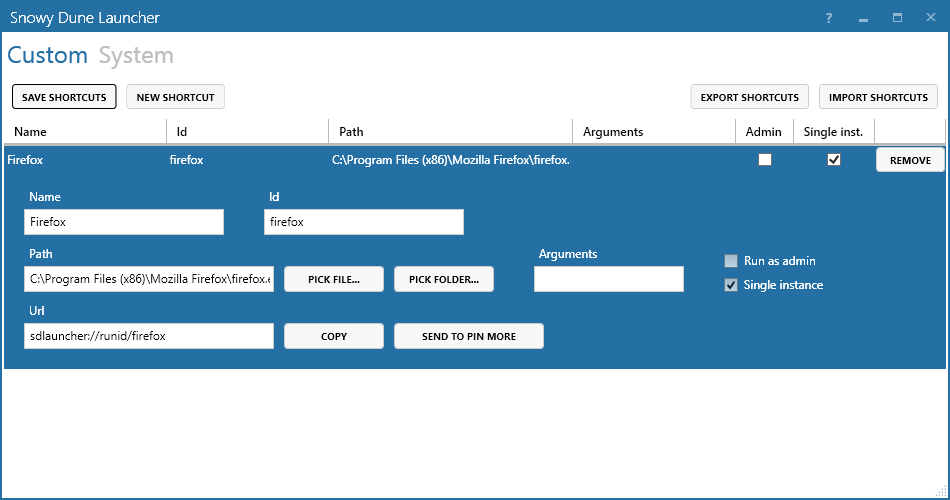
- #Shortcat to preview website element how to
- #Shortcat to preview website element update
- #Shortcat to preview website element Pc
- #Shortcat to preview website element free
Add SearchAction.closeWindowAfterExecution to indicate if the window should be closed after executing an action. Fix a rare exception when the SearchIndexer is trying to write to the temporary index DB. Fix the order of explicit providers in the filter popup window. Fix the ordering of search provider priorities in the Settings window. Add a Reset Priorities button in the Settings window to restore all default search provider priorities if messed up for whatever reason. Add a status bar to give some context to the user what is going on and what is filtered or not. Draw some nice up and down arrows to order the search provider priority. #Shortcat to preview website element how to
Add a new help search provider to guide the user how to use other search providers (type ? to get a list of search help items). Add an active loop while installing and removing packages to prevent any race conditions. Add prefab instance preview for scene objects.  Add scene objects root container asset information.
Add scene objects root container asset information.  Add support to search asset by its GUID. Optimize GetAllDerivedTypes usage based on the comment. Search scene objects by component and contained sub scene name. Hot fix for crash on OSX when dragging an element. Fix fetching scene object label when component are missing. Fix asset refreshing after quitting the application, causing Unity to freeze. Add search indexing to the scene search provider, providing better results. Add more resilience when a domain reload happens while being searching indexes in another thread.
Add support to search asset by its GUID. Optimize GetAllDerivedTypes usage based on the comment. Search scene objects by component and contained sub scene name. Hot fix for crash on OSX when dragging an element. Fix fetching scene object label when component are missing. Fix asset refreshing after quitting the application, causing Unity to freeze. Add search indexing to the scene search provider, providing better results. Add more resilience when a domain reload happens while being searching indexes in another thread. #Shortcat to preview website element update
Update documentation with all the new workflows and apis. Fix asset search provider performance regression at initialization. Fix QUICKSEARCH_EXAMPLES and QUICKSEARCH_DEBUG compilation. Show additional timing information in tooltips. I've found a few really nifty tricks with Browser Extensions like the 2 different "User-Agent Switcher"'s from Chrome/Firefox that go a bit further by letting you toggle between browser user-agent strings of various Operating Systems AND the browsers for them. The paid features seem pretty rad too if you work in remote teams (though I personally think it need a better "test drive" program before hooking people on the monthly cost).įull disclosure: there is an EXTREMELY annoying "time limit" per day on the mobile preview part (toggles open/closed from the icon to the right of the address bar - change the "device preview" from the tiny link-to-the-menu in the top right corner "Show device list"). #Shortcat to preview website element Pc
Though there are some limits to its "freemium extended functionality", it still works very well to "preview" both the PC and Mobile versions of your pages / sites in a side-by-side comparison. This Chromium-based "browser built for development" provides a multitude of ways to demo the page in various devices with a vertical "pane" on the LEFT side, much like you see Chrome Developer Tools default to the right vertical column.
#Shortcat to preview website element free
I will refrain from using the (sort of) "affiliate link" for any personal gain (There is a "token based system" that you can earn credits to get things like free "team cloud space" & "premium features" to use with it), but Blisk is actually pretty snazzy. There is actually an even more interesting solution I've recently discovered: single monitor less than 21" at a low res). The above answers are great for those who like to stick with a single browser, or have limited desktop "workspace" (eg. You can open the developer tools using the mouse by right-clicking inside the webpage, and choosing "inspect element".

Configure the device you want to emulate.
Press F12 to open the developer tools, and then Ctrl+ 7 to open the "Emulation tab". If you can't see the "Develop" menu item, you need to enable it by opening "Preferences", "Advanced", and ticking "Show Develop menu in menu bar". You can find the menu item by clicking "Develop", "Enter Responsive Design Mode". 
You can follow this tutorial on configuring a keyboard shortcut for it. It looks like Apple have disabled by default the keyboard shortcut for entering responsive design mode. You can also find the menu item by opening developer tools ("More Tools", "Develepor Tools"), and then clicking the icon that looks like a mobile phone in front of a table "Toggle device toolbar". Once developer tools is open and focused, you can open the device toolbar:
In Windows/Linux, press Ctrl+ Shift+ I or just F12. You need to have "Developer Tools" open first: You can also find the menu item under ("Tools"), "Web Developer", "Responsive Design Mode".








 0 kommentar(er)
0 kommentar(er)
